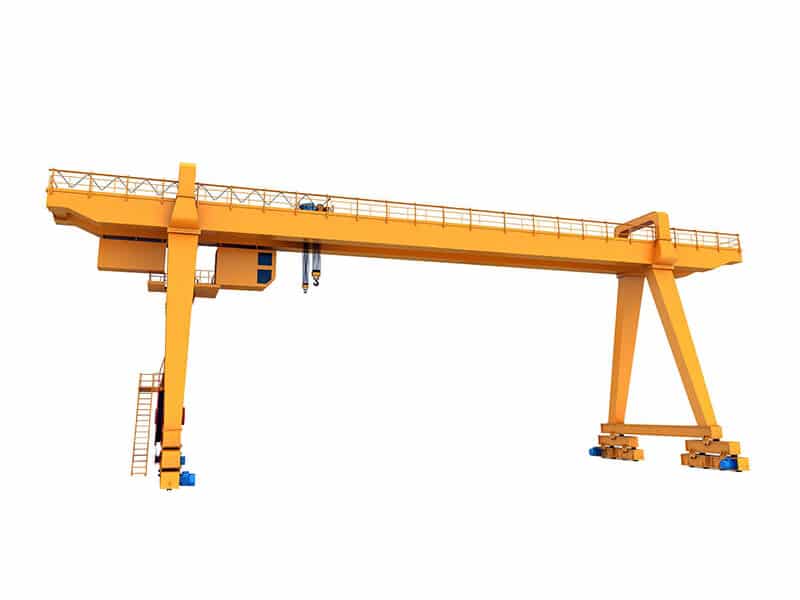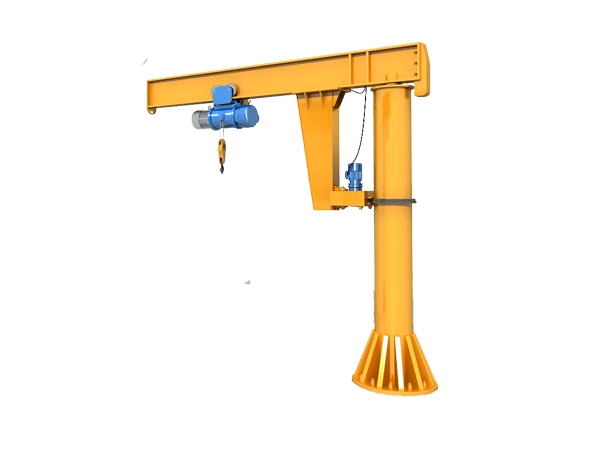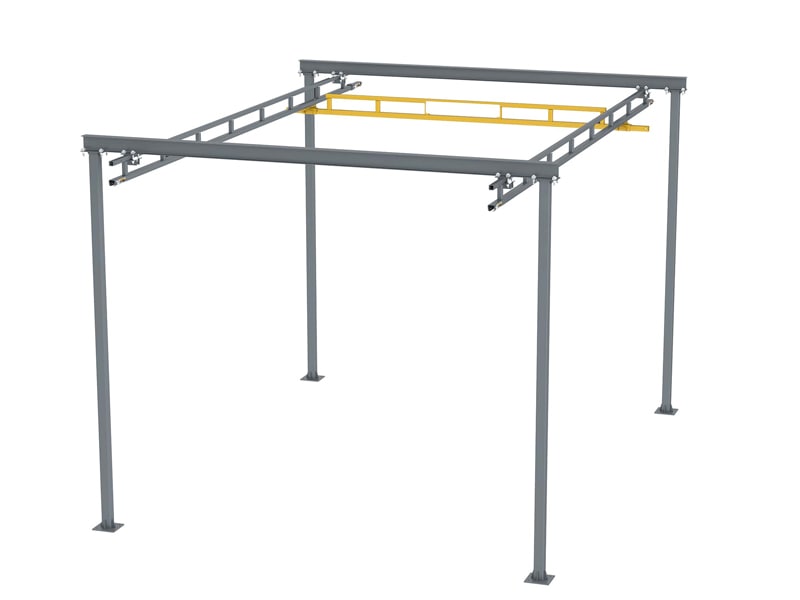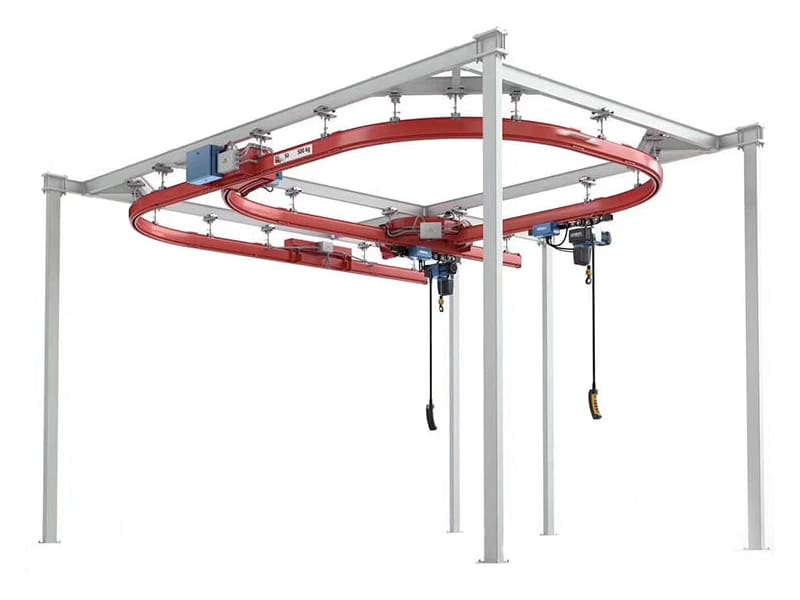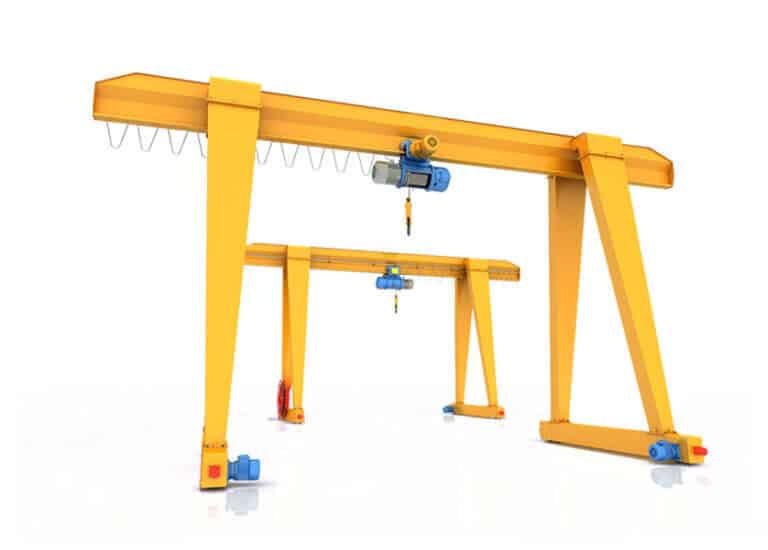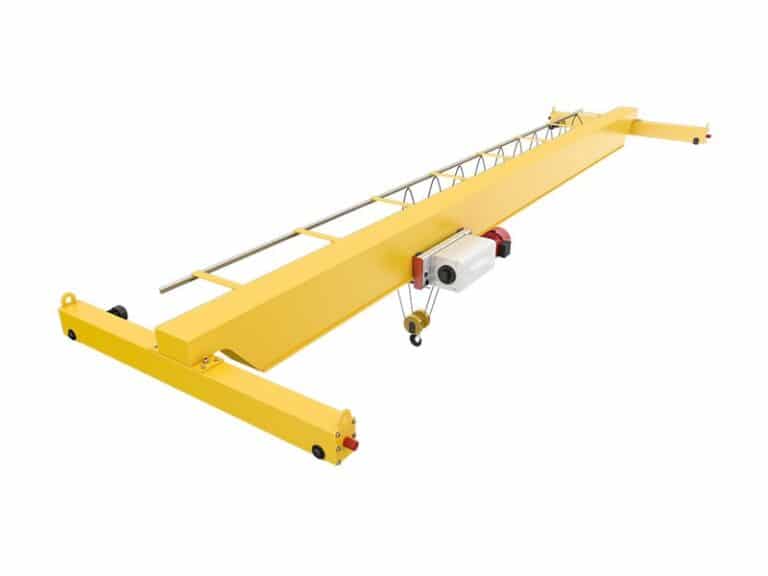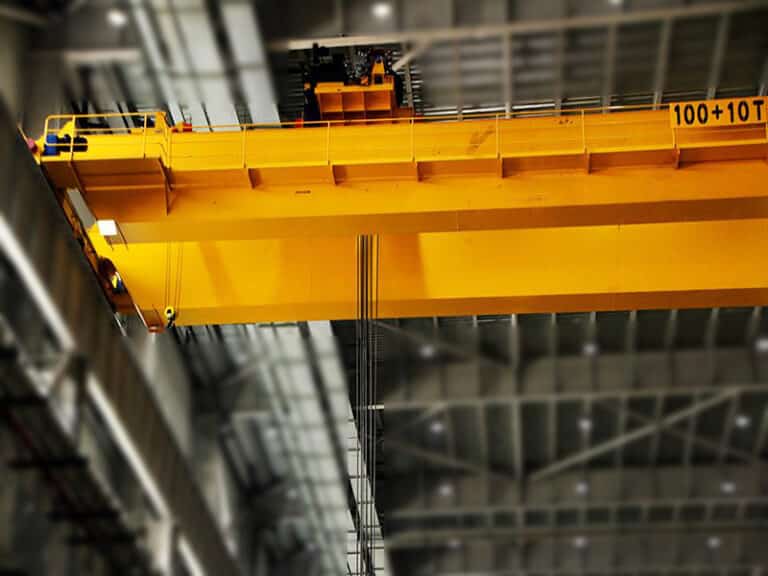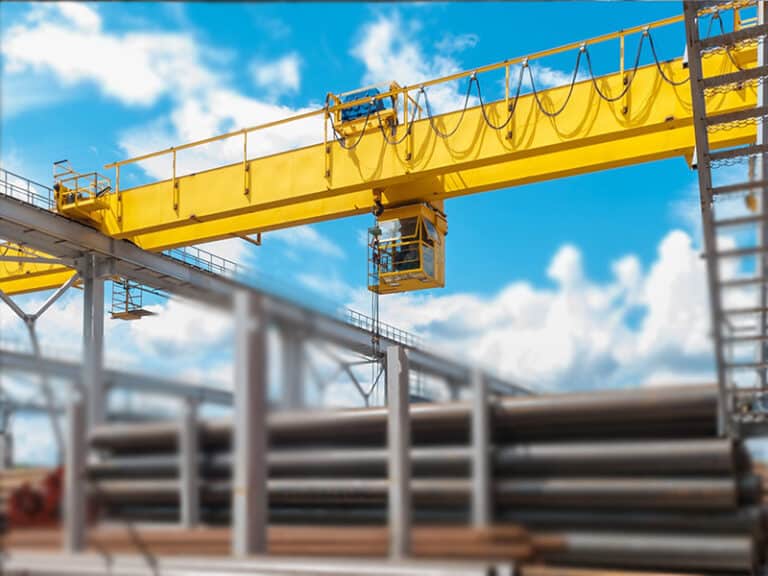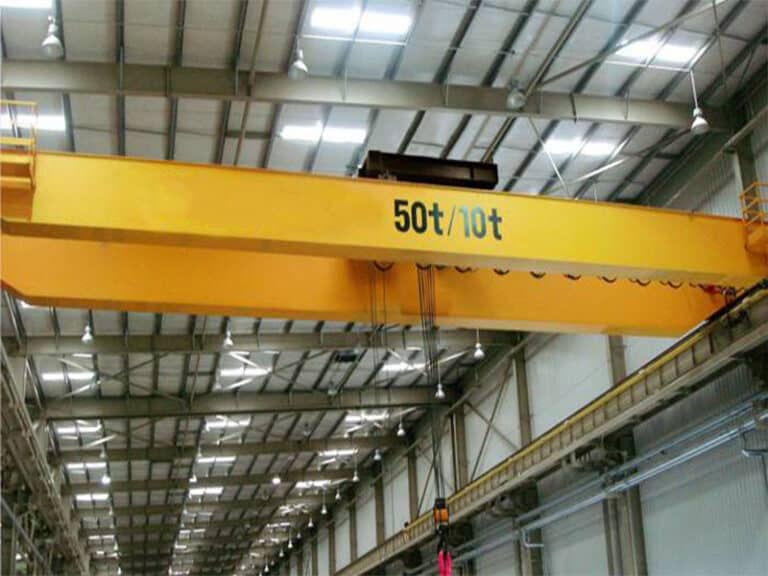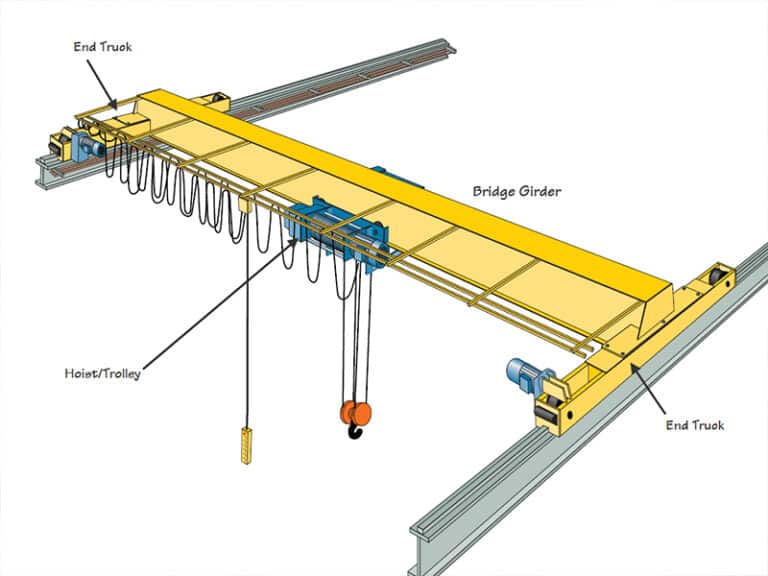Introduction
An overhead crane is a type of material handling equipment that is used to lift and move heavy loads horizontally within a facility.
The crane is typically mounted on a gantry or bridge that spans the width of the workspace, and it moves along a runway that is supported by columns or walls.
Overhead cranes can be used in a variety of industries, such as manufacturing, construction, and transportation. Some common applications of overhead cranes include:
Moving materials and products into manufacturing facilities
Loading and unloading cargo at shipping terminals
Handling large components in construction sites
Moving heavy equipment in power plants and refineries
Transporting materials in warehouses and distribution centers.
overhead cranes are essential tools for efficiently and safely handling heavy loads in a variety of industrial settings.
Installing an overhead crane can be a significant investment for a business, and there are several factors that can affect the cost, such as the size and capacity of the crane, the type of building where it will be installed, and the complexity of the installation process.
Different types of overhead cranes, such as bridge cranes, gantry cranes, and jib cranes, may vary in cost depending on their load capacity, span, and features.
For instance, bridge cranes with higher load capacity and longer spans tend to be more expensive than smaller ones.
Overhead Cranes
Higher speeds enhance industrial applications without adding any additional ground obstacles, making it a low-cost solution for factory and workstation material handling.
Gantry Cranes
It is mainly used for cargo loading, unloading, and installation in open storage yards, docks, power plants, ports, and railway stations.
Jib Cranes
A jib crane is a type of crane that performs repetitive lifting tasks in confined work areas. Suitable for workstations or as supplementary handling equipment for overhead cranes.
Workstation Cranes
Major Costs of Installing Overhead Crane
The three major costs of installing an overhead crane can be summarized as follows: Material Costs, Labor Costs, and Transport and Shipping Costs.
Material Costs
The cost of installing an overhead crane will depend on several factors such as the size of the crane, the capacity, the height of the crane, the location of the installation, and the type of materials and equipment needed.
However, here are some common materials and equipment that may be required for installing an overhead crane and their estimated costs:
Steel beams and columns – $2,000 to $10,000
Crane rail and runway beams – $2,000 to $8,000
Hoist and trolley – $5,000 to $30,000
Pendant or remote control system – $1,500 to $3,000
Electrical wiring and conduit – $2,000 to $5,000
Anchoring bolts and concrete foundation – $1,500 to $5,000
Steel cables and pulleys – $500 to $2,000
Safety features such as limit switches, overload protection, and emergency stop buttons – $2,000 to $5,000
The total cost for materials and equipment for an overhead crane installation can range from $16,500 to $68,000 or more, depending on the specific requirements of the project.
Labor Costs
Installing an overhead crane typically requires a team of skilled workers with expertise in various areas. The specific types of workers needed will depend on the complexity of the project and the type of crane being installed.
Here are some of the common types of workers required for an overhead crane installation, along with their costs and estimated number of hours required:
Structural Engineers: Structural engineers are needed to assess the building’s structure and ensure that it can support the weight of the crane. They typically charge an hourly rate of $100 to $150, and their work may take between 10 to 20 hours.
Electricians: Electricians are responsible for installing and wiring the electrical components of the crane, such as the motors and controls. They charge an hourly rate of $50 to $100, and their work may take between 20 to 40 hours.
Millwrights: Millwrights are responsible for assembling and installing the crane components, such as the bridge, hoist, and trolley. They charge an hourly rate of $40 to $80, and their work may take between 40 to 80 hours.
Welders: Welders are required to weld the structural steel components of the crane together. They charge an hourly rate of $50 to $100, and their work may take between 20 to 40 hours.
Riggers: Riggers are needed to move and position the crane components into place. They charge an hourly rate of $40 to $80, and their work may take between 20 to 40 hours.
Overall, the total cost of labor for installing an overhead crane will depend on the specific project’s scope and requirements.
However, as a rough estimate, the total labor cost for a standard overhead crane installation could range from $10,000 to $30,000 or more, depending on the complexity of the project.
Transport and Shipping Costs
The cost of transporting a crane depends on several factors, including the size and weight of the crane, the distance it needs to be transported, and the mode of transportation.
The cost of transporting a crane can vary greatly depending on the distance and mode of transportation.
For example, if the crane is being transported by road, the cost will depend on the distance it needs to be transported, the size of the trailer required to transport the crane, and the number of permits and escorts required.
The cost of transporting a crane by road can range from $10,000 to $30,000 or more, depending on the size and distance.
If the crane needs to be transported by sea, the cost will depend on the distance and the type of vessel required.
Shipping a crane can be more expensive than transporting it by road, and costs can range from $30,000 to $100,000 or more, depending on the distance and size of the crane.
The location of the installation site can also affect the transportation cost.
If the installation site is in a remote location or requires special permits, the transportation cost can increase significantly.
Additionally, if the installation site has limited access or requires special equipment, such as cranes or forklifts, to unload and position the crane components, this can also increase the transportation cost.
In summary, the cost of transporting and shipping a crane can vary greatly depending on the distance, size, and mode of transportation.
The installation location can also affect the transportation cost, and it’s essential to consider these factors when estimating the total installation cost.
Factors that Affect the Cost of Installing Overhead Crane
The cost of installing an overhead crane can be affected by various factors, including the type of crane, installation location, and additional costs.
Type of Overhead Crane
Overhead cranes are used in industrial settings to move heavy loads across a factory or warehouse floor. They come in different types, each with its own unique features, advantages, and installation costs. Here are the most common types of overhead cranes and the differences in their installation costs:
Bridge Cranes
Overhead Cranes
Higher speeds enhance industrial applications without adding any additional ground obstacles, making it a low-cost solution for factory and workstation material handling.
Bridge cranes, also known as overhead traveling cranes, are the most common type of overhead crane. They consist of a bridge that spans the width of the building and is supported by two end trucks. The hoist and trolley run along the bridge, allowing them to move horizontally across the length of the building.
Installation costs for bridge cranes are relatively high because they require a complex network of support structures, including columns, runway beams, and foundations. The size and weight of the crane also contribute to the installation cost, as larger and heavier cranes require stronger support structures.
Gantry Cranes
Gantry Cranes
It is mainly used for cargo loading, unloading, and installation in open storage yards, docks, power plants, ports, and railway stations.
Gantry cranes are similar to bridge cranes, but they have legs that support the bridge instead of end trucks. This allows the crane to move along a runway that is installed on the ground instead of being suspended from the ceiling.
Installation costs for gantry cranes are typically lower than for bridge cranes because they do not require the same level of support structures. However, they may still require a foundation and runway beam installation, which can add to the installation cost.
Jib Cranes
Jib Cranes
A jib crane is a type of crane that performs repetitive lifting tasks in confined work areas. Suitable for workstations or as supplementary handling equipment for overhead cranes.
Jib cranes consist of a hoist and trolley mounted on a vertical mast that rotates around a fixed base. They are typically used for lifting and moving loads within a limited area, such as a work cell or small shop floor.
Installation costs for jib cranes are generally lower than for bridge or gantry cranes because they require less support structures. However, the installation cost may vary depending on the type of jib crane and the size of the load it is designed to handle.
Monorail Cranes
Monorail cranes consist of a hoist and trolley that move along a single beam that is suspended from the ceiling. They are typically used for moving loads along a straight path, such as from a production line to a storage area.
Installation costs for monorail cranes are generally lower than for bridge or gantry cranes because they require fewer support structures. However, the installation cost may vary depending on the length of the beam and the size of the load it is designed to handle.
In summary, the installation costs of different types of overhead cranes vary depending on the complexity of the support structures required, the size and weight of the crane, and the type of load it is designed to handle.
While bridge cranes typically have the highest installation costs, jib cranes and monorail cranes generally have lower installation costs but are limited in terms of the load capacity and range of motion they offer.
Installation Location
The installation location of an overhead crane can have a significant impact on the cost of installation.
Here are some of the factors that affect the cost:
Distance
The distance between the crane manufacturer and the installation location is a crucial factor in determining the cost of installation.
The longer the distance, the higher the transportation costs for the crane components and the installation crew.
Additionally, long distances may require the use of specialized transportation methods, such as air or sea freight, which can add to the overall cost.
Environment
The environment in which the crane will be installed can also impact the installation cost.
For example, if the installation location is in an area with extreme temperatures or high humidity, special measures may be required to protect the crane from corrosion or other types of damage.
Similarly, if the installation location is in a corrosive environment, the crane may need to be made from special materials that can resist corrosion, which can increase the cost of the crane and its installation.
Terrain
The terrain of the installation location can also affect the cost of installation.
If the installation location is in an area with uneven or sloping terrain, additional support structures may be required to ensure the crane is level and stable.
Similarly, if the installation location is in an area with soft or unstable ground, additional foundation work may be required to ensure the crane is securely anchored, which can increase the cost of installation.
Access
The accessibility of the installation location can also impact the cost of installation.
If the installation location is in a remote or hard-to-reach area, additional transportation costs may be incurred to get the crane components and installation crew to the site.
Similarly, if the installation location is in an area with limited space or restricted access, additional measures may be required to transport the crane components and complete the installation, which can increase the cost.
In summary, the installation location of an overhead crane can have a significant impact on the cost of installation.
Factors such as distance, environment, terrain, and access can all contribute to increased installation costs, and should be carefully considered when planning for the installation of an overhead crane.
Additional Costs
In addition to the installation costs of an overhead crane, there may be additional costs that arise during the lifetime of the crane.
There are several additional costs that may arise during the lifetime of an overhead crane, including permits, inspections, maintenance, repairs, and training.
Here are some of the additional costs that may need to be considered:
Permits
In some jurisdictions, permits may be required to install an overhead crane.
The cost of these permits will vary depending on the location and type of crane being installed.
The permit process may also require additional inspections and approvals, which can increase the overall cost of the installation.
Inspections
Regular inspections of an overhead crane are necessary to ensure it is safe and operating correctly.
These inspections may be required by law, and failure to comply with inspection requirements can result in fines or other penalties.
The cost of inspections will depend on the type of crane and the frequency of inspections required.
Maintenance
Overhead cranes require regular maintenance to ensure they remain safe and operating efficiently.
This may include lubrication, replacement of worn parts, and adjustments to the crane’s alignment.
The cost of maintenance will depend on the type and age of the crane, as well as the frequency of maintenance required.
Repairs
In the event of a breakdown or damage to the crane, repairs may be required.
The cost of repairs will depend on the type and extent of the damage, as well as the availability of replacement parts.
Training
Proper training of crane operators and maintenance personnel is essential to ensure the safe and efficient operation of the crane.
The cost of training will depend on the number of personnel involved, as well as the complexity of the crane and the level of training required.
These costs should be carefully considered when planning for the installation of an overhead crane, as they can significantly impact the overall cost of ownership.
Conclusion
Summarize the key points of the article.
Provide some tips on how to reduce the cost of installing an overhead crane.
Encourage readers to seek professional advice before deciding to install an overhead crane.
Tips
Installing an overhead crane can be a significant investment for a business, but there are ways to reduce the cost of installation. Here are some tips:
Choose the Right Crane Type: There are various types of overhead cranes available, and each has its own advantages and disadvantages.
Select the crane type that suits your business requirements and budget. A lighter-duty crane with fewer features will likely cost less than a heavy-duty crane with more features.
Optimize Your Space: Make sure your workspace is optimized for your overhead crane installation.
You want to make sure that the crane is installed in a location that provides adequate clearance, but that also maximizes the available space to ensure optimal use of your crane.
Plan Your Installation: Plan the installation of your overhead crane carefully.
You want to make sure that you are not installing more equipment than you need, but also that you are not installing too little equipment.
Proper planning can save you time and money, as well as reduce installation costs.
Choose the Right Installation Company: Choose a reputable and experienced installation company to install your overhead crane. They will have the knowledge and expertise to install your crane efficiently and effectively, reducing installation time and costs.
Maintenance: Proper maintenance of your overhead crane will help to reduce repair and replacement costs down the line. Make sure that you have a regular maintenance schedule in place and that your crane is regularly inspected to avoid costly repairs or replacement.
By following these tips, you can reduce the cost of installing an overhead crane while still ensuring that you have the equipment you need to efficiently operate your business.
seek professional advice
Installing an overhead crane can be a complicated process that requires extensive knowledge and expertise in crane design, engineering, and safety regulations. Without proper guidance, it can lead to costly mistakes, serious injuries, and even fatalities.
A professional crane installer will have the necessary training and experience to ensure that your crane installation meets all relevant safety standards and regulations.
They can help you determine the appropriate crane capacity, the best location for the crane, and the necessary equipment for your specific needs.
They can also advise you on any necessary modifications to your facility or building structure to ensure that it can safely support the crane.
Moreover, a professional crane installer can assist you in developing a comprehensive maintenance and inspection plan for your crane.
Regular maintenance and inspections are critical for ensuring that your crane operates safely and efficiently.
By seeking professional advice, you can ensure your crane installation meets all necessary safety standards, runs smoothly and keeps your workers safe.
About Us
WeiHuaCrane is a professional overhead crane manufacturer, we provide complete crane design, installation, training, maintenance and crane parts support.
If you are confused about the selection and installation of the crane, you can contact us, and we will provide you with an overall solution about the crane.


